After doing some cutback on a corkbark black pine, I saved the clippings so I could do some grafting. Corkbark pines aren’t as strong on their own roots as they are on black pine roots. As a result, most of the corkbark bonsai we see are grafted. The earlier these trees are grafted, the better. At about 3 years old, young black pines can be used to host scions from corkbark pines.
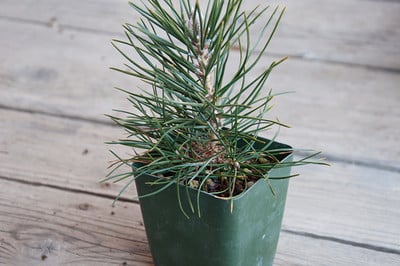
3 year-old black pine seedling cutting
The first step is making room for the scion. I did this by removing the lower branches and needles.
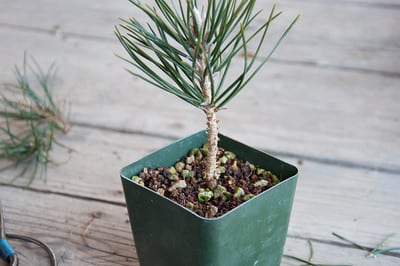
After removing the lower growth
At this point I had a flashback to a pine I’d grafted many years ago. After performing a successful graft, I realized, several years later, that I’d attached the scion too high on the trunk. Before grafting this young pine, I removed the soil until I found the rootbase.
This pine was created by seedling-cutting. A few months after the tree sprouted, I clipped the taproot in the hopes of replacing it with many lateral roots. I was surprised, however, to find that only a single root had resulted. For the sake of the graft, I removed more and more soil until I found the spot where the roots began to divide. I prepared to attach the scion just above this point.
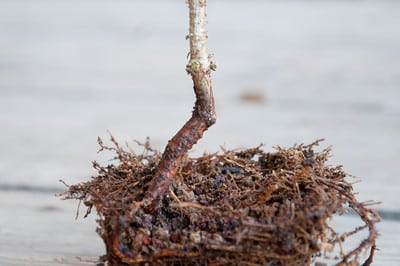
Only one new root
I prepared the scions by removing about half of their needles. The trick is to find the right balance – I want to keep as many needles as possible, but not so many that the scion will quickly dry out. In this case, I retained about five pairs.
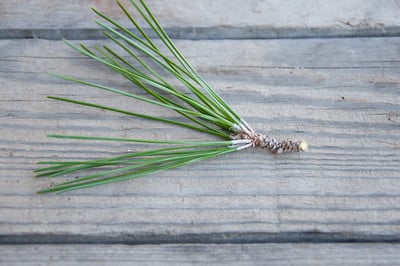
Scion from corkbark black pine
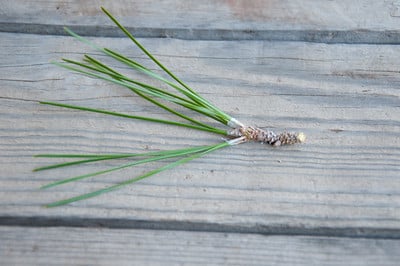
After removing extra needles
I then cut the base of the scion to a sharp point and inserted it into the trunk of the seedling. The important bit here is lining up the cambium layer of the scion with that of the host. When the scion is thinner than the host, I try to line up the cambium on one side of the scion rather than centering the scion and missing on both sides. Both pictures below show the side that doesn’t line up well.
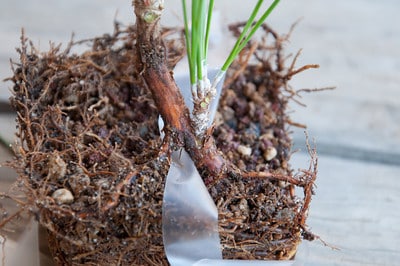
Scion in place
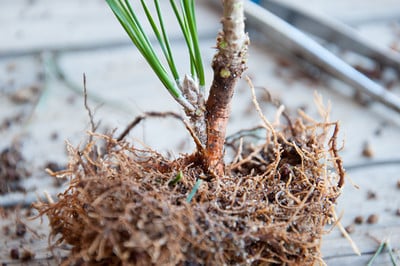
Another scion
After inserting the scion, I covered it with a plastic bag filled with a pinch of moist New Zealand sphagnum moss. I tied it all with grafting tape and moved on to the next seedling. The final step is covering the bags with tape to prevent the sun from drying out the scions.
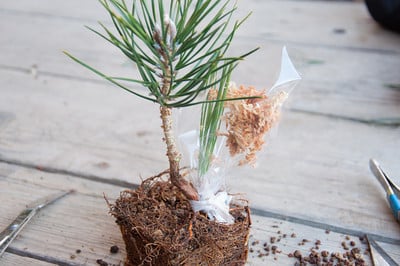
All wrapped up
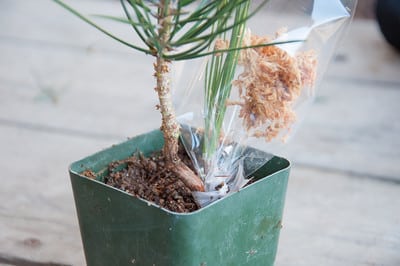
Back in the pot
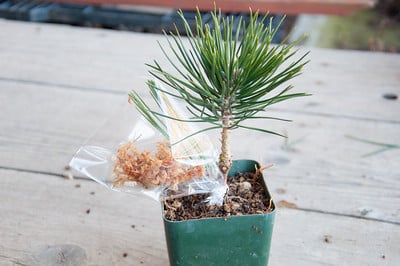
Number two complete
Typically, pines are fairly active in January where I live as winters aren’t usually that cold. This year, however, has proved far cooler than normal, and within a few days there was lots of frost and the soil of my trees froze solid. This may have been too much for the scions, but I may not know for sure for several months. Fingers crossed!
Subscribe to Bonsai Tonight
New Posts Delivered Every Tuesday and Friday
lucas says
Please excuse my lack of experience, but do you leave the plastic bag open to allow air? You also mentioned covering with tape. Is this grafting tape or some other type? Also the small amount of sphagnum moss you have in the photos, is this typically the amount you would use? Is this just to reduce moisture loss from the scion?
At what age can you take scions from the corky bark pine? Is there any benefit as to where it was on the tree to begin with ie are scions taken from the apex more vigorous than those taken lower down?
Also can you tell me if there is a need for anything like a rooting hormone (I know you are not wanting roots, but I was wondering if there is any grafting products that can speed up the process?)
Thanks for your time, and keep up the great wok on your blog!!
Jonas Dupuich says
Thanks Lucas! Some quick replies:
– The bag stays closed to retain moisture
– Grafting tape works well – the tape should be strong enough to hold the scion snug without smashing the tissue in the area
– That’s the typical amount of moss, and it’s fairly moist to retain moisture. Alternative methods include injecting water into the bag or wrapping the needles with semi-permeable tape
– Scions are typically 1-2 years old – don’t use summer shoots from the previous year’s decandling
– Where shoots appear on the tree plays into relative bud strength – you don’t want too strong (typically near the apex) or too weak (interior buds)
– I don’t know of any hormones or hormone-like substances that help with grafting (might be nice!)
Ryan Neil provides good advice here – check it out:
http://www.youtube.com/watch?v=KBUxgUQFigw